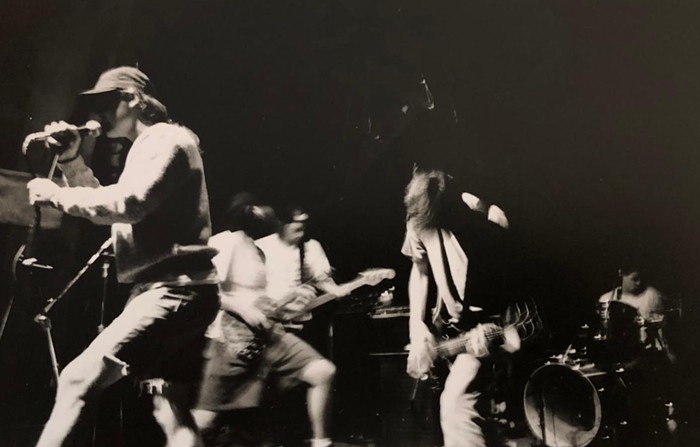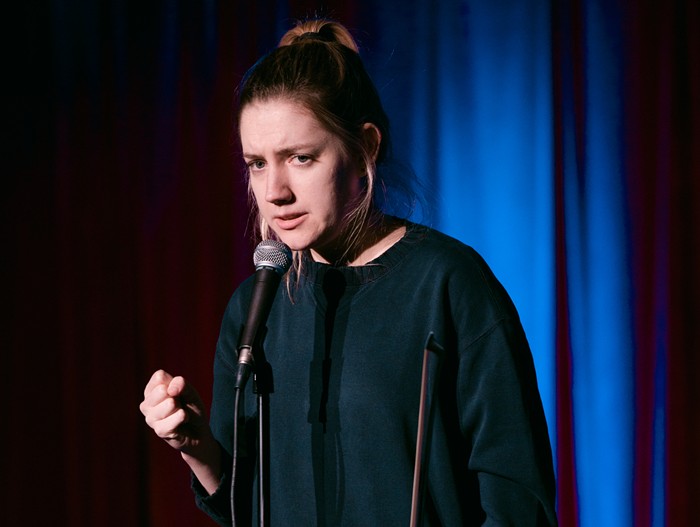After spending a day fine-tuning my stereo system, I delved into The Best of Pérez Prado (RCA/Legacy) hoping to decipher the various grunts, vocal ejaculations, and cajoling exclamations of Pérez Prado (1916–1989), the handsome and wily bandleader whose hit instrumentals instigated the 1950s mambo craze. Prado's vocal outbursts–"Dilo!" as well as "Hunh!" and "Ah-yah!"–not only cued the saxes and other sections of the band, but punctuated the incessant percussion and whinnying wah-wah brass. Unlike Latin jazz bandleaders such as Machito and Tito Puente, Prado made full use of unusual effects from the dialed-in echo on the brass stabs of "Mambo No. 8" to the still-weird loping organ/tambourine groove of "Patricia," with its once-famous (but still startling) glowering bass trombone blat.
The hour-long compilation has only two misses: an organ-driven version of "Heigh-Ho," the Seven Dwarfs' marching song from the movie Snow White, and the proto-surf rock of "Quién Será" recorded in 1957. I would have preferred the hectoring voodoo chant of "Lupita" or the inclusion of the mono version of "Caballo Negro" with its sinewy bass intro, both of which can be heard on the cheap and sonically inferior half-hour compilation, 10 Grandes Exitos de Pérez Prado (BMG México).
I also used my gussied-up stereo to investigate electronic voice phenomenon, better known as EVP. The Ghost Orchid: An Introduction to EVP (Ash International) collates examples from three EVP researchers active in the 1960s and '70s: Freidrich Jürgenson, Konstantin Raudive, and Raymond Cass. All three collected purported examples of the dead communicating via radio and their mutterings embedded in magnetic tape. After some obsessive listening, I'm not sure garbled, polyglot utterances such as "Only Sonja Will Make It" and "We Can See Edith by Radio" confirm communication from beyond, but almost all of the examples have a wonderfully cryptic, lo-fi patina suitable for DJ loops or, as the booklet recommends, "intriguing and original ringtones for mobile phones."
One composer who believed his music came from an unearthly source was the reclusive Italian composer Giacinto Scelsi (1905–1988), who wrote one of the seminal 20th-century works for cello, the Trilogia. Its fearsome technical demands—Scelsi notated each of the cello's four strings on a stave for the third movement, "Ygghur"—and incantatory spiritual intensity explains why only one cellist, Frances-Marie Uitti, has released a complete recording. While Uitti's Trilogia (Etcetera), made in collaboration with Scelsi, remains definitive, cellist Jessica Kuhn's new recording, Giacinto Scelsi (Thorofon; dist. by Qualiton), is a welcome addition. Kuhn takes Scelsi's tempi more slowly than does Uitti, but it's highly effective for this ruminative, mystical work. Essential.
Finally, I recommend David Borgo's Sync or Swarm (Continuum), a provocative, gutsy, and potentially revolutionary attempt to apply chaos theory, fractal plotting, sociological Actor-Network Theory, the concept of swarm intelligence, and other analytical templates to improvised music. Wow!


















